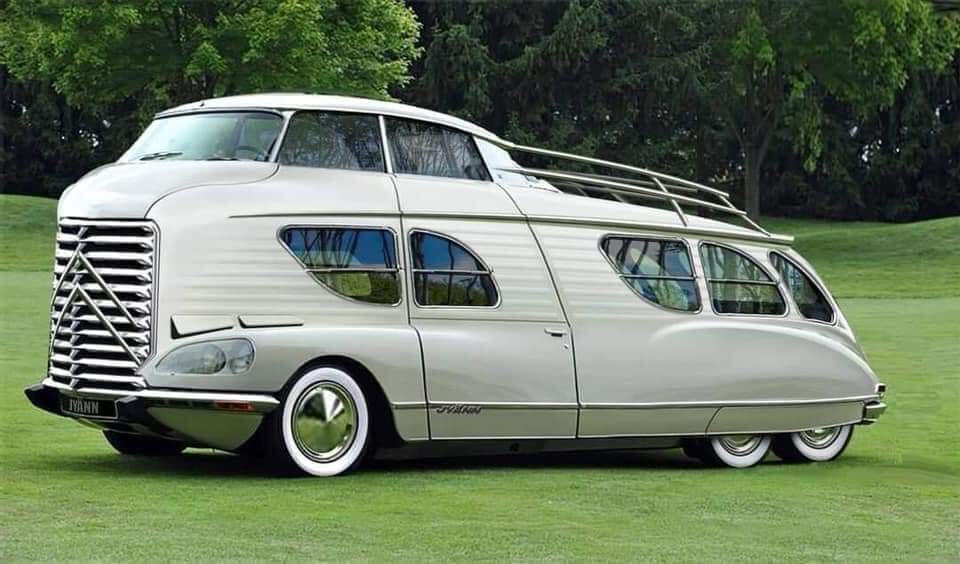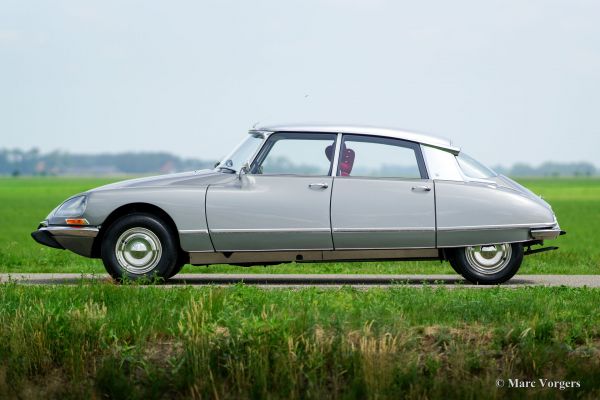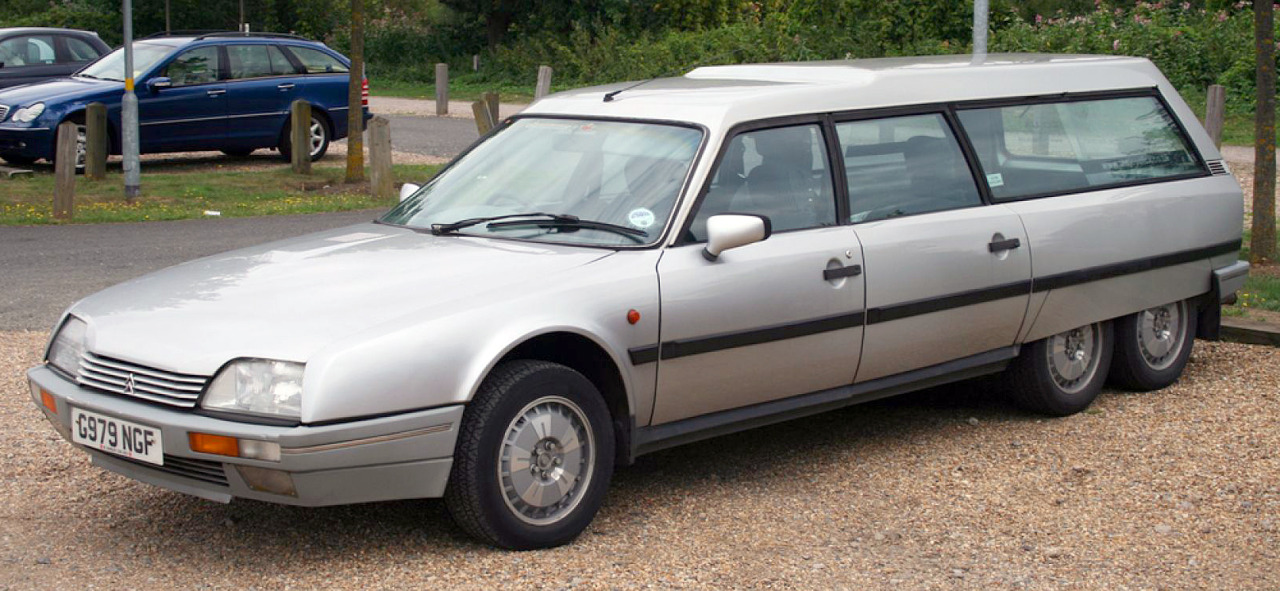tmyers
En-Route
Do they lower the stall speed?
Only if you can roll it 90 degrees
Do they lower the stall speed?
Only if you can roll it 90 degrees

Don’t do that. My in laws did that once to an RV. Not recommended. LOL
But did it stall?
But did it stall?
Are you bringing it to Oshkosh and Camp Bacon? This seems like something that must be seen in person to really experience it.
Ted, thought of you and this thread when I saw this:
Ted, thought of you and this thread when I saw this:
In case you didn't see it... It's a cannibalized Citroen DM I think...

Out of curiosity, any Wanderlodge owners here? Really really want to lay my hands on a late 80 PT40, maybe get into a Series 60 WB40 that had a REALLY good selling price.
I was introduced to Wanderlodges at my first Oshkosh almost a decade ago, and I've been obsessed ever since.
I've got a weird GFCI issue I'm trying to figure out on the bus, maybe some of you RV/electrical folks have ideas - I'm a mechanical engineer so I try to solve everything with hammers.
There's one GFCI in the bathroom that feeds the refrigerator and another outlet. This has worked fine since we bought the RV, and worked fine on the entire last trip without tripping (that was the first trip we took post-remodel, with the new fridge). Fridge worked perfectly, no issues. No tripping, no nothing. So about a week ago I go to reset the GFCI (I popped it before parking the RV so the fridge wouldn't run when we didn't want it running) and it wouldn't reset. My first thought was old GFCI breaker, which it was, so put in another one I had sitting around. It would reset and work properly (fridge turned on, etc.) but then pop after about 5-10 seconds. It was a no-name brand GFCI outlet from Menards and I'd had trouble with that same brand in the garage and other places on the property, so I went and got a Levitron one from Home Depot. Put that in and it will go about 15-20 seconds, but still pop.
Last night I unplugged the load side on that outlet (so in other words the outlet receives power, but it doesn't go anywhere after that) and it looks like that didn't trip it. I need to make sure it's still like that this morning, but it seems to be working.
The circuit is weird to me. For some reason there's a 20A breaker in the main part of the bus, then a 15A breaker underneath the bus. They run in series, either one will shut things off. The GFCI is what's blowing now, though. Over the winter when we were running space heaters on that circuit the under bus 15A breaker is what would blow sometimes, the GFCI seemed fine and wasn't what I remember tripping.
One of the problems with how I have things set up now (this was my own fault during the remodel) is that it's hard to get at the outlet for the fridge. I suppose I could if I tried hard enough and that would let me determine whether or not the fridge is the problem. Or maybe the problem is the outlet the fridge plugs into.
The problem definitely doesn't seem to be amperage, but probably the overly-sensitive GFCI design to trip with something around 5 mA (or less) of current going between neutral and ground. In the garage I have a couple GFCIs that seem to pop if you look at them funny and are way too sensitive. I'm not an electrician, but the fact that this was working and now isn't for no apparent reason is a bit puzzling.
Any thoughts from the brain trust?
Re USB port outlet... I love the idea but almost nobody makes one that'll handle modern fast charge. And I've gotten used to the phones recharging in 2 hours or less from empty.
Quite a few are 500 mA USB1 power. Nearly these days. And almost none are USB-C PD which I'm slowly moving everything to even if I need an adapter.
Nice. Yeah they weren't around much last I looked but leave it to Leviton to keep up.Really?
https://www.leviton.com/en/products/t5635-w
Admittedly only to 15V and 30W
(And only when only using a single port, it drops to 5V 3A per port when using both)
I’ll just eliminate the GFCI and replace it with a normal outlet I think.

Not sure if you’re saying the 310 is dangerous relative to a non-GFCI outlet or saying it’s safe relative to the RV I built while drinking in the basement.#fakenews, you fly a 310.
Not sure if you’re saying the 310 is dangerous relative to a non-GFCI outlet or saying it’s safe relative to the RV I built while drinking in the basement.
A dedicated non-GFCI outlet behind the fridge is not a danger to anyone.
Fridges and freezers for some reason like to trip GFCIs. Theoretically they shouldn't, but as GFCIs and fridges are real things and not diagrams in EE class, they do. I had the electrician rewire my garage to provide a non-GFCI circuit for the garage fridge and freezer.
Dedicated non-GFCI outlets are the norm (at least when I was doing electrical work) for refrigerators. One thing that I know can give GFCI outlets headaches are motors that can generate back current when they are stopping. That I suspect is why some refrigerators kick GFCIs.
That’s really good to hear...I’ll have to look at those. We just bought a used Class A, and the handling in wind was...sporty.As far as driving goes, the improvement of the Air Tabs was shockingly positive. The driving characteristics of the bus were something that I "got used to" but really wanted to improve. At speeds above 70 any wind at all would really make it squirrely, and some winds had my max comfortable speed down closer to 60. We drove south at 75 or so basically the entire way and it was never uncomfortable - even on 2-lane roads with semis going the other way or drafting behind a semi or other large vehicle (those were the two worst before). So they may look a bit silly, but I can whole-heartedly recommend them as a cheap improvement in stability.
That’s really good to hear...I’ll have to look at those. We just bought a used Class A, and the handling in wind was...sporty.
2004 Fleetwood Terra...Ford chassis with the Triton V10.@MauleSkinner what kind of RV did you buy? I have some other suggestions for improving handling.
2004 Fleetwood Terra...Ford chassis with the Triton V10.
Suggestions appreciated!
